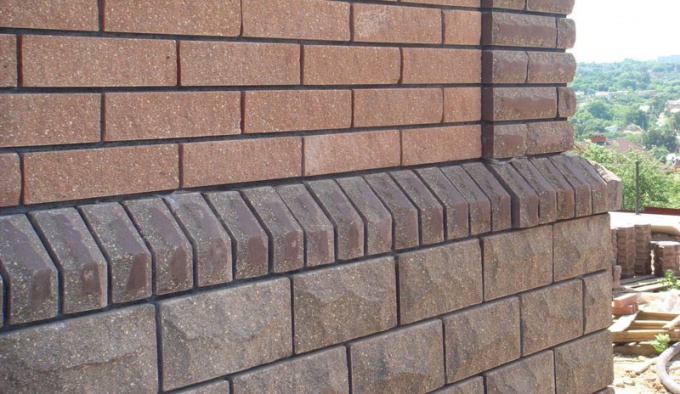You will need
- Selected for design the material, degreaser, adhesive composition, the composition for grouting gloves, water, capacity for cultivation of dry mixes, spatulas, brush with stiff bristles, wooden pegs, stamps and rollers for plastering.
Instruction
1
Design of Foundation of various finishing materials – work the execution of which should be treated with the same care that the house is faced as a whole. In addition to decorative function, the design of the Foundation (base) performs a protective, protects it from weathering and from moisture during rain and provides more insulation.
2
Decide on what material to decorate the lower part of the house you will choose, given the architectural style and project structure. For example, stone is the clear choice for buildings in Chalet style. The most common methods of registration of the Foundation - covering of artificial or natural stone materials, exterior plaster.
3
Artificial stone. This material is based on high quality materials and has excellent performance characteristics: it is durable, resistant to many mechanical damages, atmospheric impacts and temperatures, is more affordable compared to natural stone value. The technology of decorating them the Foundation of a lot easier than natural stone, since artificial lighter and has a smooth surface on the reverse side. Currently, the material most common in the design of foundations, especially ceramic tile, artificial stone – porcelain tiles that mimic the texture and color of natural granite.
4
Artificial stone cladding is mounted on different surfaces: brick and concrete, wood and metal, plasterboard, particleboard. Make sure that the Foundation, regardless of type, dry, smooth, durable and not subject to shrinkage or deformation. Clean the surface of the Foundation from paint, grease, oil or not fixed plaster. The surface foundations of a porous material treated with primer or deep penetration of the adhesive mixture. Lay on the floor next to the prepared surface, at least 2-3 square meters of decorative stones, alternate elements along the thickness, color, size, use tiles from a few different packages at the same time.
5
After preparation proceed to the design of the Foundation. Apply the adhesive to the tile on the back side of each fragment. When laying tiles, avoid straight lines of stitches vertically and horizontally. Vibrating motion firmly press the tiles into the adhesive mass, starting from the outer corners. For heavy tiles, apply adhesive not only on base but on the tile itself, immediately sticking it. The pointing (filling in the spaces between the tiles) produced using a dry mixture. In order to avoid differences in color, for cooking every serving take the same amount of water. Use the spatula for grouting, fill the joint with mortar and then smooth it literally press movement. A stiff brush will remove any excess solution without waiting for it to harden.
6
Technology of registration of the Foundation natural stone similar to the above. When decorating the surface of natural stone do a thorough layout of the surface in accordance with the forms of the fragments. Use adhesives suitable for the chosen type of stone, to avoid oxidation or damage to the surface of the material.
7
Exterior plaster. Prepare the surface by cleaning it of any impurities. Before starting work, secure in the wall at a distance of 10-15 mm from each other by small wooden pegs. Before applying the plaster, dampen the surface of the Foundation with clean water.
8
The material is applied in two steps. The selected dilute the mixture with water according to instructions. With a spatula sprinkles the plaster on the wall, make sure that the mixture is coated pegs. According to the manufacturer's instructions, soak the time required for complete drying of the first layer. Apply a second coat of plaster. Diversify the texture of the coating is not yet cured material, apply the drawing with the help of special stamps, rollers.
Useful advice
Exterior stucco walls do only raw materials, because otherwise the plaster will cost a little expensive, and it will serve not for long.
